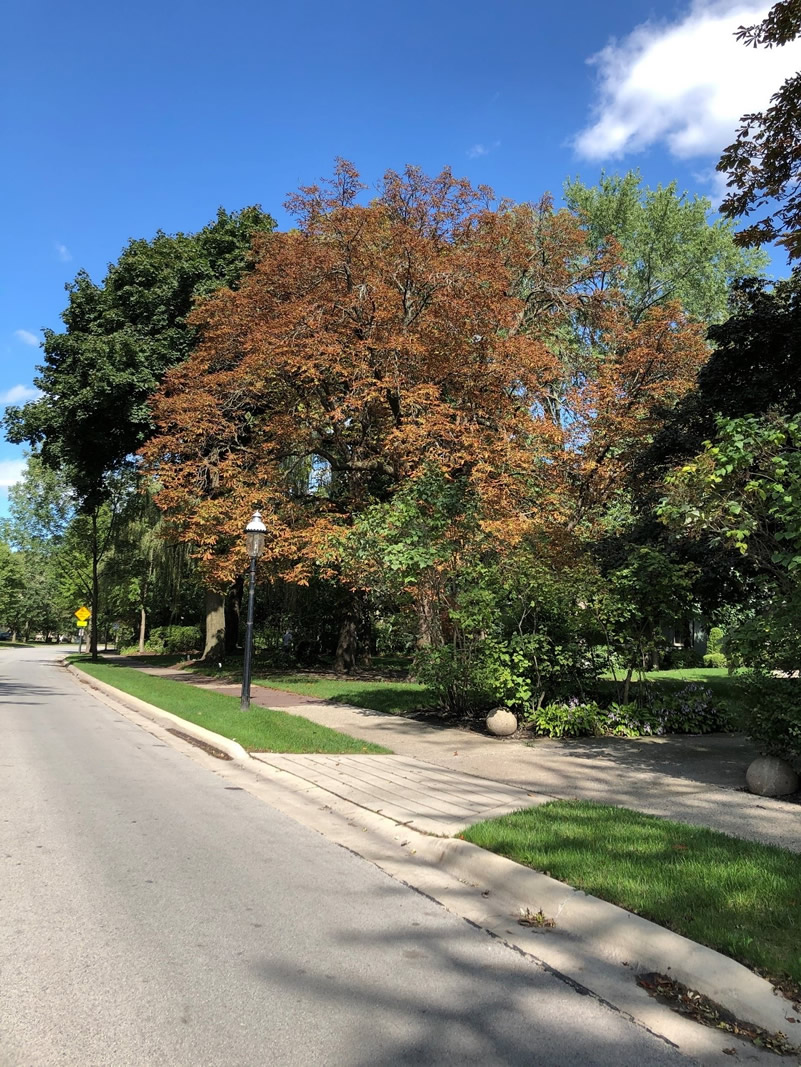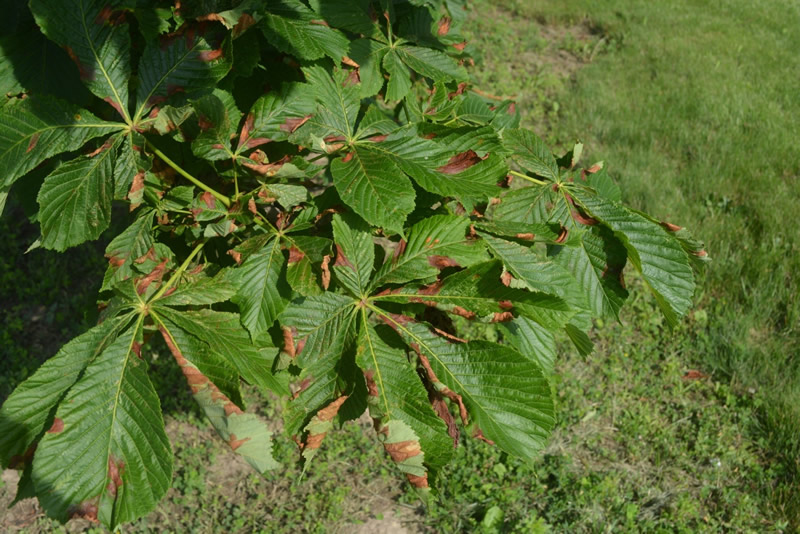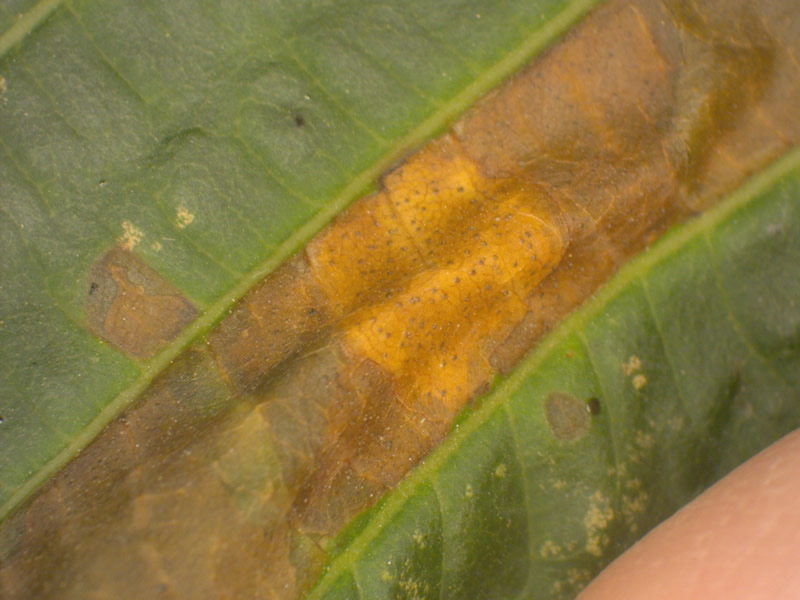Issue 11, September 28, 2020
Guignardia Leaf Blotch
Guignardia leaf blotch is fungal disease that affects the common horsechestnut (Aesculus hippocastanum) and many other Aesculus species. The disease occurs annually on many host trees, with symptoms intensifying throughout the summer.

Guignardia Leaf Blotch
Symptoms begin as rapidly enlarging, irregularly shaped, water-soaked areas. Affected areas eventually turn red-brown with a yellow halo that merges with the surrounding healthy green tissue. Small lesions are initially limited by the veins but can enlarge, coalesce, and lead to distortion and partial shriveling of leaflets. Tiny black fruiting bodies appear within lesions, which help to distinguish from environmental scorch. These fruiting bodies produce spores that contribute to secondary infections. Severely infected trees may defoliate prematurely. However, the defoliation occurs late in the season and won't affect the overall health of the tree.

Common horsechestnut (Aesculus hippocastanum) with symptoms of Guignardia leaf blotch (IL, June 2014)

The tiny black fruiting bodies produced by the fungus are visible with the naked eye or with the use of a small hand lens. The fruiting bodies help to distinguish the fungal disease from environmental scorch.
Guignardia leaf blotch pathogen overwinters as fruiting bodies in fallen leaves. In the spring, the fruiting bodies release spores into the air, some of which will land on developing Aesculus leaves. An extended period of leaf wetness following spore landing will initiate germination and infection. About 10-20 days after infection, infected leaves can produce new fruiting structures and initiate secondary infection cycles.
Damage from this disease is mostly aesthetic. Disease management should focus on cultural practices. Prune trees to maintain an open, well-aerated canopy is an easy first step to managing this disease. Rake, destroy, or dispose of fallen diseased leaves the end of the season. Fungicide sprays can also be applied beginning at bud-break. They will help maintain the appearance of the tree but are unnecessary to maintain tree health. Additionally, chemical controls may be cost prohibitive due to the size of affected trees.
Author:
Travis Cleveland